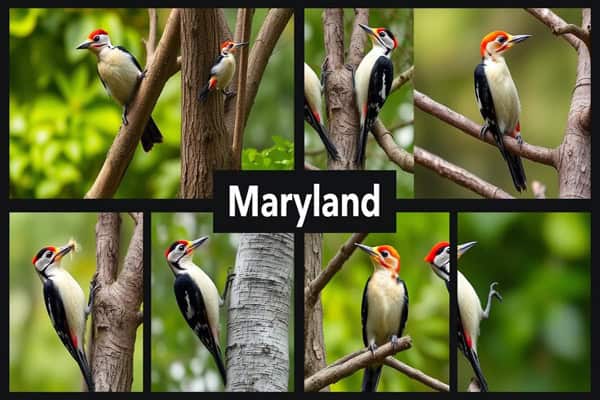5 Types Of Hummingbirds in Michigan! (2024)
Do you know how many different Hummingbirds species live in Michigan? The Wolverine State is a haven for these tiny, vibrant birds. You’ll find everything from the Ruby-throated Hummingbird to the rare Anna’s and Green Violet-ear. This guide will take you through the 6 types of hummingbirds in Michigan. You’ll learn about their looks, habits, and where to see them in 2024.
Hummingbirds in Michigan
The Ruby-throated Hummingbird is the most common in Michigan. But, other species like the Rufous, Anna’s, Broad-billed, and Green Violet-ear Hummingbirds can also be seen. These sightings are less common, though.
Common and Rare Hummingbird Species in Michigan
The Ruby-throated Hummingbird is native to Michigan. The University of Wisconsin-Madison’s Journey North website tracks their sightings. In 2023, the first Ruby-throated Hummingbird was seen on April 12 in Lansing.
Rufous Hummingbirds sometimes visit Michigan, mostly in the fall and winter. They are considered rare in the state.
Common Hummingbird Species In Michigan
- Ruby-throated hummingbird
- Rufous Hummingbird
- Anna’s hummingbird
- White-eared hummingbird
- Broad-billed hummingbird
- Mexican violetear
1. Ruby-throated Hummingbird
The ruby-throated hummingbird (Archilochus colubris) is the most common in Michigan. These birds are tiny, measuring 7-9 cm long with a wingspan of 8-11 cm. They have metallic green feathers on top, grayish-white feathers underneath, and a bright ruby-red throat in males.
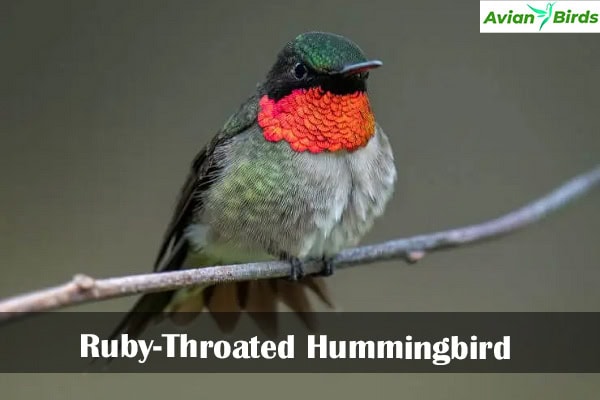
Appearance and Coloration
Male and female ruby-throated hummingbirds look different. Males have a bright ruby-red throat, while females have a white throat. Both have green feathers on top and grayish-white feathers underneath.
Range, Migration, and Population
Ruby-throated hummingbirds come to Michigan from Central America, Mexico, and Florida. There are about 35 million of them in the eastern U.S. They start arriving in Michigan in mid-April to early May, with the most in mid-May in the south.
They begin their journey back south in August or September. They head to Florida, the Caribbean, and Mexico.
Taxonomy, History, and Unique Features
The ruby-throated hummingbird (Archilochus colubris) is the only breeding hummingbird in Michigan. They make an amazing migration, flying thousands of miles. This includes a 600-mile flight across the Gulf of Mexico without stopping.
Hummingbirds can hover in place while eating nectar. They flap their wings about 200 times per second.
Behavior and Feeding Habits
Ruby-throated hummingbirds need a lot of energy. They eat half their body weight in sugar each day, feeding 5-8 times an hour. They can use sugar in just 20 minutes.
On cold nights, they go into a deep sleep called torpor. Their body functions and metabolism slow way down.
2. Rufous Hummingbird
The Rufous Hummingbird (Selasphorus rufus) is a less common but equally captivating visitor to Michigan. These hummingbirds stand out with their reddish-orange plumage. It covers their backs, flanks, and throats, making them a highlight in Michigan’s hummingbird scene.
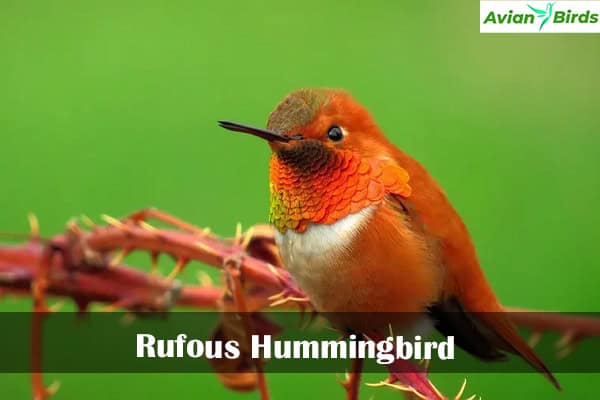
Appearance and Distinguishing Characteristics
The rufous hummingbird appearance is known for its vibrant reddish-brown feathers. These feathers can look almost coppery in certain lights. The male Rufous Hummingbird is especially eye-catching, with a bold orange-red throat and back.
Its white underparts contrast sharply with its bright colors. Females and young birds have a more subdued look but still show a distinctive rusty color on their flanks and tails. This makes them easy to identify.
Range and Migration Patterns
The rufous hummingbird migration is quite long, covering nearly 4,000 miles from Mexico to Alaska. While they’re not as common in Michigan as some other species, they can be found in various places. They often arrive early due to warmer temperatures.
In 2007, Michigan recorded four Rufous Hummingbirds, more than in Ohio or Indiana. In 2006, Ohio had two, Indiana had one, and Michigan had none. Before their numbers declined, 5-6 Rufous Hummingbirds were expected in Ohio, and at least two in northern Indiana.
So far in 2024, three Rufous Hummingbirds have been banded, with one in Ohio and two in Michigan. More were found in southwestern Ohio and southern Indiana by other people. Usually, it takes 5-10 minutes for these birds to enter traps, but one took 2 1/2 hours.
3. Anna’s Hummingbird
The Anna’s Hummingbird (Calypte anna) is not often seen in Michigan but has been spotted a few times. This species is named after Anna Masséna, Duchess of Rivoli. They live mainly on the western coast of North America, from northern Baja California to Southern California. Some have even moved to the Pacific Northwest for the winter, which might explain their rare sightings in Michigan.
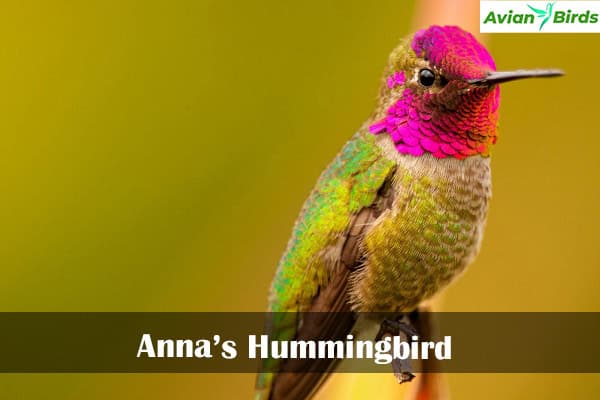
The Anna’s Hummingbird stands out with its bright crimson-red crown and gorget. In bad light, it might look less vibrant. Adult males show off with a rose-pink throat and crown. They do amazing courtship displays, flying up to 130 feet high before swooping down.
Immature males don’t have the full gorget like adults and look less bright. Females and young males have greenish feathers on top, black wings, and a small pinkish patch on the throat. They also have a white spot behind the eye. They are bigger than the Rufous Hummingbird, another bird seen in Michigan, but still rare here.
Anna’s Hummingbirds live in many places like yards, parks, and woods. They are not common in Michigan but their visits are exciting for bird lovers. Seeing this beautiful bird is a treat for those who get to see it.
4. Broad-billed Hummingbird
The Broad-billed Hummingbird (Cynanthus latirostris) is not often seen in Michigan. Yet, it does make rare visits to the state. These hummingbirds are small, about 8.25 – 10.2 cm long. They stand out with their broad, flat bills.
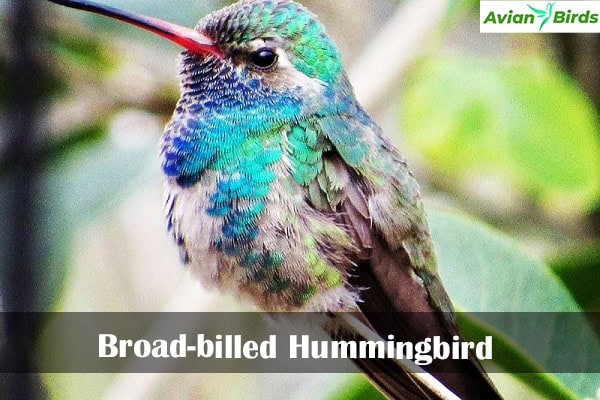
Appearance and Identification
The adult male Broad-billed Hummingbird has a bright red crown and gorget. The female looks duller, with a green crown and gray throat. Sometimes, she shows red iridescence. Both females and young birds have dull underparts. Adult males have fuller tails with rounded corners.
Range, Habitat, and Behavior
These hummingbirds live mainly in northwestern Mexico. They sometimes visit southern Arizona, southwest New Mexico, west Texas, and Southern California. They like places with the right food plants. You can find them in desert scrub, canyon bottoms, thorn forests, and tropical forests.
Taxonomy and Nomenclature
Ornithologists see 5 or 6 similar subspecies in Mexico. In the U.S., only the magic subspecies is found. They are as big as Ruby-throated or Black-chinned Hummingbirds. People often call them sparrow-sized or smaller.
5. Green Violet-ear Hummingbird
The Green Violet-ear Hummingbird (Colibri thalassinus), also known as the Mexican Violet-ear, is a bright and beautiful bird. It lives in the highlands from south-central Mexico to western Panama, and the Andes. Sometimes, it visits Michigan, making it a rare sight.

Range and Habitat Preferences
Green Violet-ears love living in forests, subtropical zones, and gardens. They prefer the canopy and borders of forests, woodlands, scrub, and clearings. In Michigan, they have been seen seven times, in years like 1996, 2002, 2008, 2009, and 2011.
Appearance and Size
The Green Violet-ear Hummingbird stands out with its green and violet feathers. These birds are a bit bigger than others, measuring 4-4.7 inches long and weighing about 0.3 ounces. They are among the larger hummingbirds in North America.
Best Places to See Hummingbirds in Michigan
Great spots for hummingbird watching include Whitefish Point Bird Observatory and Seney Wildlife Refuge in the Upper Peninsula. Also, try various gardens, parks, and backyard feeders across the state. Feeding them with nectar can help during their migration.
To draw hummingbirds to your yard, plant flowers like bee balm, cardinal flower, and red columbine. Use a 1:4 mix of refined white sugar and tap water in your feeders. This can help feed these amazing birds in Michigan.
Check Our Previous Articles:
Attracting Hummingbirds to Your Backyard
Turning your Michigan backyard into a spot for hummingbirds is a fun project. It brings these amazing birds right to your yard. By adding nectar-rich flowers and hummingbird feeders, you make an oasis they can’t resist.
Planting Nectar-Rich Flowers and Feeders
Hummingbirds love flowers that are bright and have long tubes, full of nectar. Try planting red trumpet vines, fuchsias, petunias, and lantana in Michigan. Also, use hummingbird feeders with sugar water to draw them in.
Creating a Hummingbird-Friendly Environment
- Use native shrubs, trees, and vines for shelter and places to perch.
- Don’t use pesticides to keep the ecosystem healthy for insects and spiders.
- Always clean and fill your feeders with fresh nectar for hummingbirds.
- Think about adding a misting device or birdbath for water.
With nectar-rich flowers, feeders, and a friendly environment, your Michigan backyard will be a hit with hummingbirds. Enjoy watching them all season.
Migration Patterns and Sightings
Michigan’s hummingbirds have amazing migration patterns. The Rufous Hummingbird makes a huge journey from Mexico to Alaska every year. They travel up to 4,000 miles. This year, they’re arriving earlier than usual, thanks to warmer temperatures.
The Ruby-throated Hummingbird is also showing up early, even in places like Ontario, Canada, and Michigan. These early sightings tell us that hummingbird migration is changing.
Wrapping Up…
Michigan is a paradise for hummingbird fans, with many species to see. You can find everything from the common Ruby-throated Hummingbird to the rare Rufous, Anna’s, Broad-billed, and Green Violet-ear Hummingbirds. This state is full of different hummingbirds, each with its special traits.
Seeing hummingbirds at your feeder or in top birding spots is a treat. Their bright colors, amazing flying skills, and interesting eating habits are a joy to watch. As you learn more about hummingbird species in Michigan, you might want to help protect these birds.
Watching hummingbirds in Michigan is an adventure. You can see them in beautiful gardens or at famous birding spots. These birds are amazing and can make you love nature more. Let the beauty of hummingbirds in Michigan inspire you to care for our natural world.


